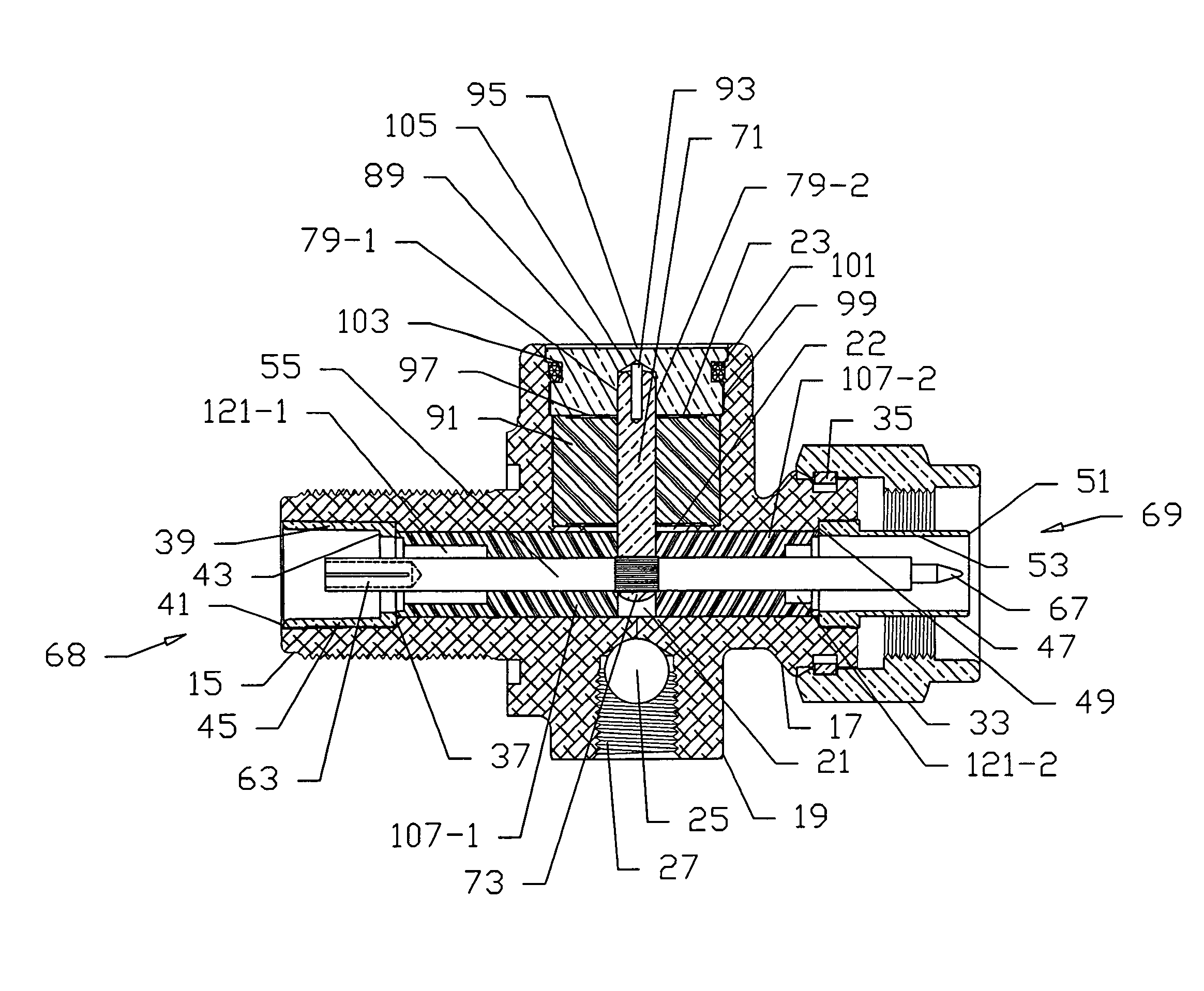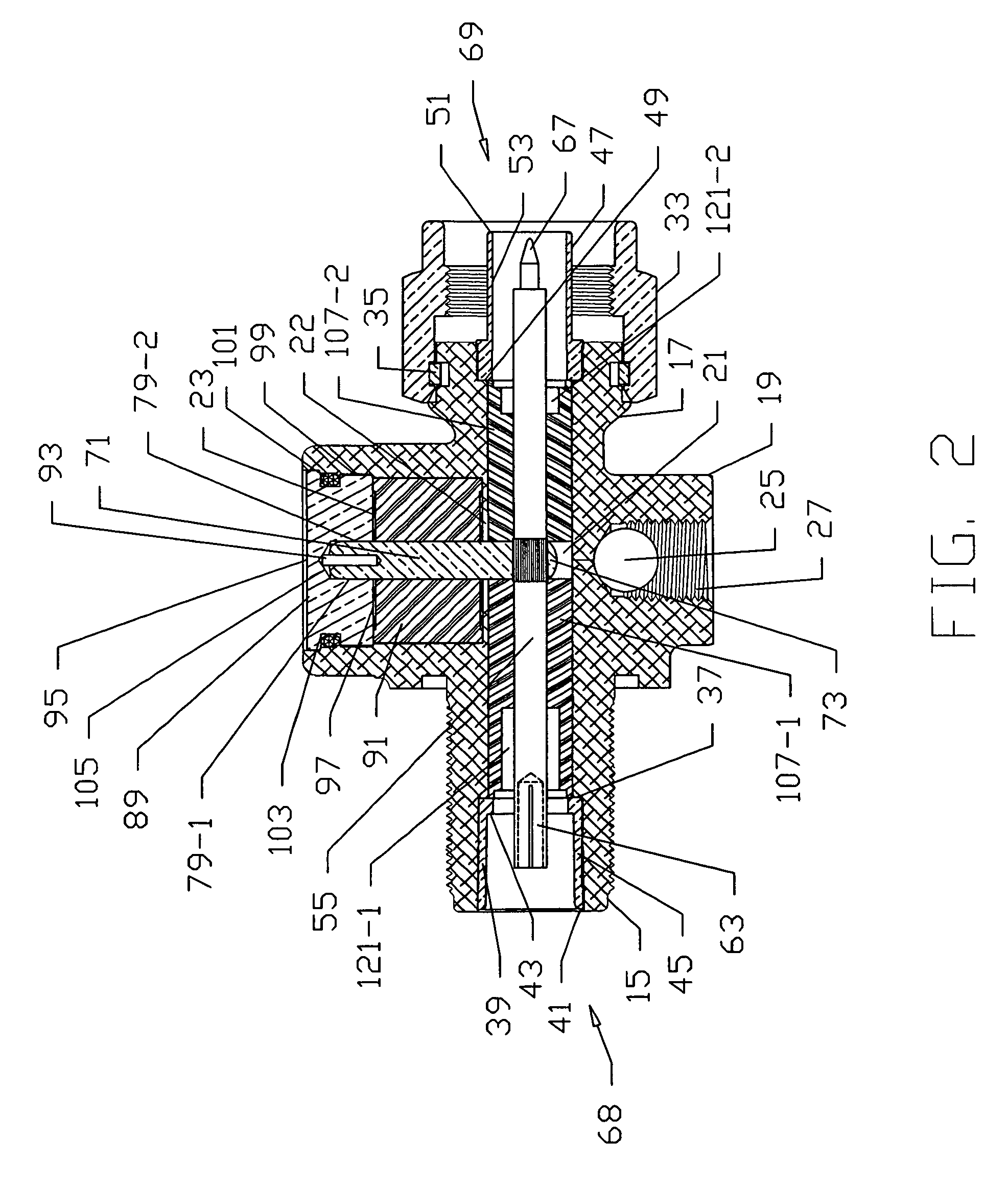Protective device
a protection device and shielding technology, applied in the direction of waveguide devices, emergency protective arrangements for limiting excess voltage/current, coupling device connections, etc., can solve the problems of reducing the effectiveness of protection devices, reducing the efficiency of protection devices, and reducing the likelihood of significant damage to any sensitive components connected, so as to achieve easy assembly, low cost, and the effect of reducing the risk of damag
- Summary
- Abstract
- Description
- Claims
- Application Information
AI Technical Summary
Benefits of technology
Problems solved by technology
Method used
Image
Examples
Embodiment Construction
[0033]Referring now to FIGS. 1 and 2, there is shown a protective device for a radio frequency (RF) transmission line that is designed to transmit electromagnetic signals of a desired frequency band between a source and a load, the protective device being constructed according to the teachings of the present invention and represented generally by reference numeral 11. As will be described further below, protective device provides over-voltage protection to the transmission line, thereby precluding potentially harmful transient voltages from being transmitted to the load.
[0034]Protective device 11 comprises an outer conductor 13 that serves as the return path, or ground, for the communication signal. Preferably, outer conductor 13 is cast, forged or otherwise constructed from a single conductive material that is relatively inexpensive in nature, such as aluminum, zinc, aluminum-based alloys or zinc-based alloys. As will be described further in detail below, protective device 11 is sp...
PUM
 Login to View More
Login to View More Abstract
Description
Claims
Application Information
 Login to View More
Login to View More - R&D
- Intellectual Property
- Life Sciences
- Materials
- Tech Scout
- Unparalleled Data Quality
- Higher Quality Content
- 60% Fewer Hallucinations
Browse by: Latest US Patents, China's latest patents, Technical Efficacy Thesaurus, Application Domain, Technology Topic, Popular Technical Reports.
© 2025 PatSnap. All rights reserved.Legal|Privacy policy|Modern Slavery Act Transparency Statement|Sitemap|About US| Contact US: help@patsnap.com



